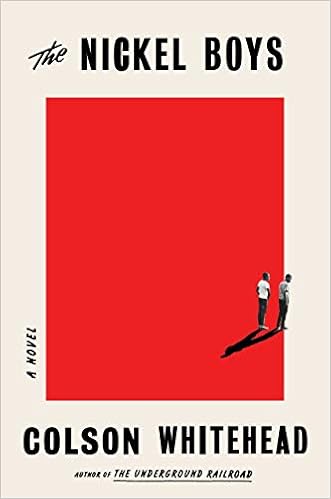Set in a segregated 1960s reform school in Florida, this novel focuses on two black teenagers. Elwood Curtis works hard and earns such good grades that he receives an offer to attend college classes while still in high school. Unknowingly, he hitches a ride in a stolen car and ends up being sent to the Nickel Academy where boys are routinely subjected to brutal punishments: night-time beatings, solitary confinement, and rape. Some boys even disappear after being taken “out back.” There Elwood meets Turner who becomes his best friend. Turner, serving his second stint, tries to teach Elwood how to survive.
Elwood and Turner are foil characters.
Elwood is an idealistic young man who greatly admires Martin Luther King
Jr. He wants to maintain a sense of
dignity above all else: “There are big
forces that want to keep the Negro down, like Jim Crow, and there are small
forces that want to keep you down, like other people, and in the face of all
those things, the big ones and the smaller ones, you have to stand up straight
and maintain your sense of who you are.”
Because he believes in and works for justice, he calls out petty thieves
and defends victims of bullying: “If he
looked the other way, he was as implicated as the rest. That’s how he saw it, how he’d always seen
things.”
Turner, on the other hand, is very street-smart. He knows how the world works and advises
Elwood to do whatever it takes to survive:
“you got to see how people act, and then you got to figure out how to
get around them like an obstacle course.”
He is sceptical, even about the civil rights movement: “you can march and wave signs around and
change a law if you convinced enough white people. In Tampa, Turner saw the college kids with their
nice shirts and ties sit in at the Woolworths.
He had to work, but they were out protesting. And it happened – they opened the
counter. Turner didn’t have the money to
eat there either way. You can change the
law but you can’t change people and how they treat each other.”
Nickel Academy serves as a microcosm of the outside world: “’In here and out there are the same.’” The arbitrariness of arrests and punishments
is emphasized: “no one had ever seen
[Nickel’s handbook of rules of conduct] despite its constant invocations by the
staff. Like justice, it existed in
theory.” Racism is sanctioned because it
benefits whites; Nickel boys, for example, perform odd jobs for whites in the
community, and merchants sell food that was designated for the black boys at
the school.
Whitehead is at pains to emphasize how the treatment of the boys is
just part of the racism that has plagued the country: “Their daddies taught them how to keep a
slave in line, passed down this brutal heirloom. Take him away from his family, whip him until
all he remembers is the whip, chain him up so all he knows is chains. A term in an iron sweatbox, cooking his brains
in the sun, had a way of bringing a buck around, and so did a dark cell, a room
aloft in darkness, outside time. After
the Civil War . . . the white sons remembered the family lore. . . . The
Florida Industrial School for Boys wasn’t in operation six months before they
converted the third-floor storage closets into solitary confinement. . . . The
dark cells remained in use even after two locked-up boys died in the fire of ’21. The sons held the old ways close. The state outlawed dark cells and sweatboxes
in juvenile facilities . . . But the rooms waited, blank and still
airless. They waited for wayward boys in
need of an attitude adjustment. They
wait still, as long as the sons – and the sons of those sons – remember.”
The above quotation illustrates my problem with the novel: it often reads like a non-fictional account
with a journalistic tone. (The author
acknowledges that the story is heavily based on the Dozier School for Boys in
Marianna, Florida.) Third-person narration
is used and that distances the reader from the characters. Certainly, the history lesson I quoted above
emphasizes the feelings of the writer as opposed to the feelings of the young
boys. The horrors they experience are
seen but not felt as compellingly. It is
impossible not to feel moral outrage, but a strong emotional connection is
missing.
There is no doubt that the book tells an important story. Considering the treatment blacks still receive
from the police and the criminal justice system, the book is very timely. I just wish that the tone were less flat and
that there was more showing and less telling.

No comments:
Post a Comment